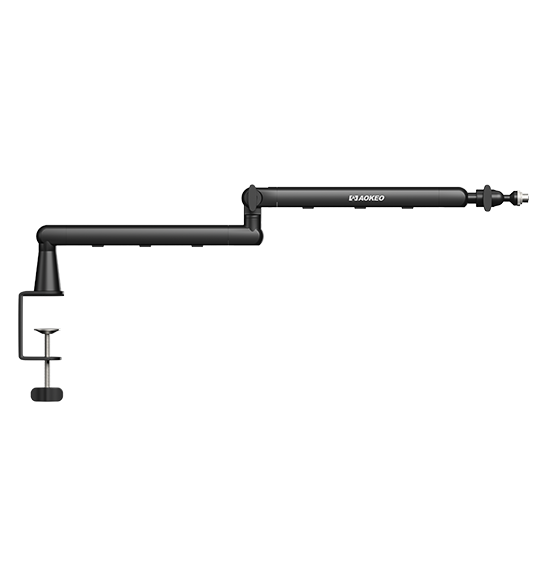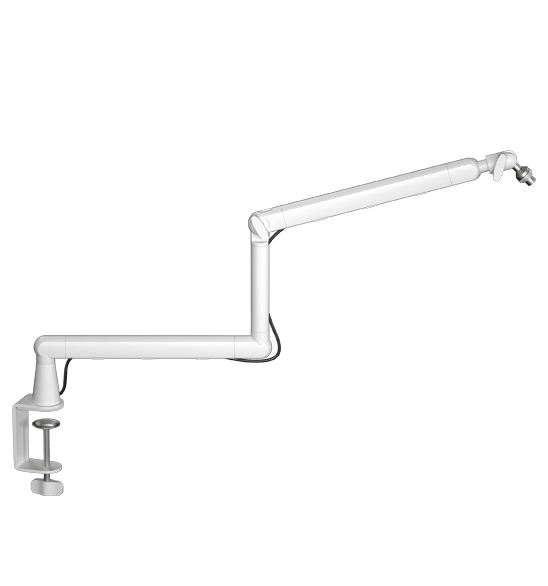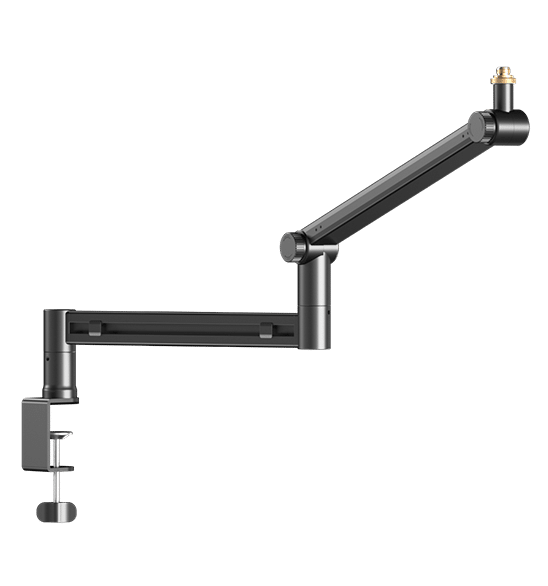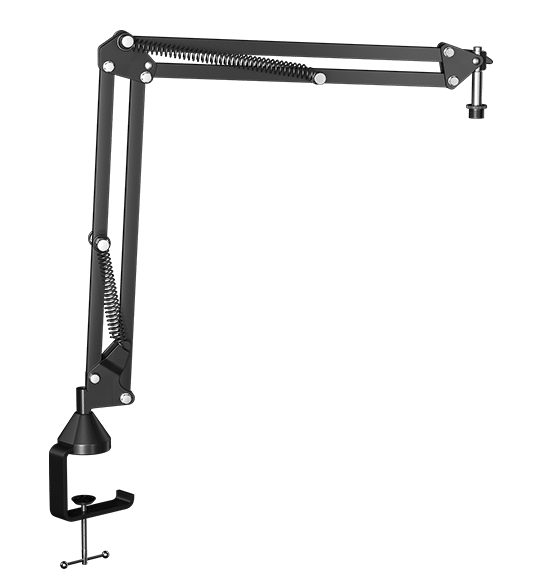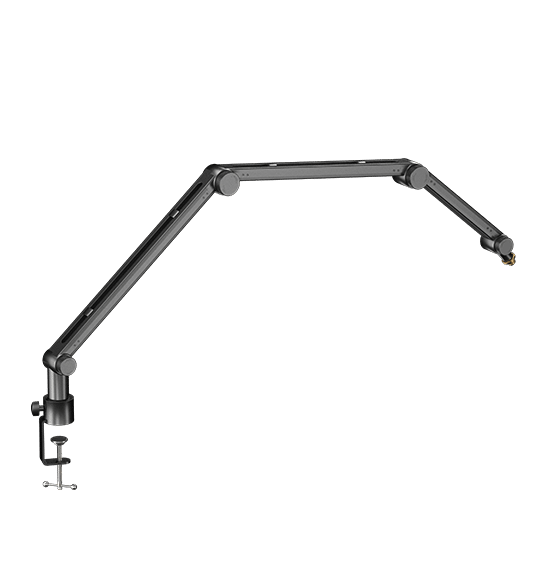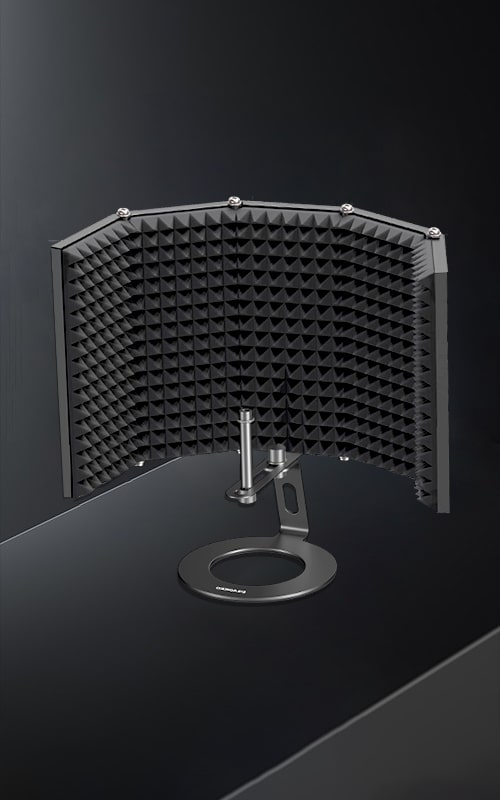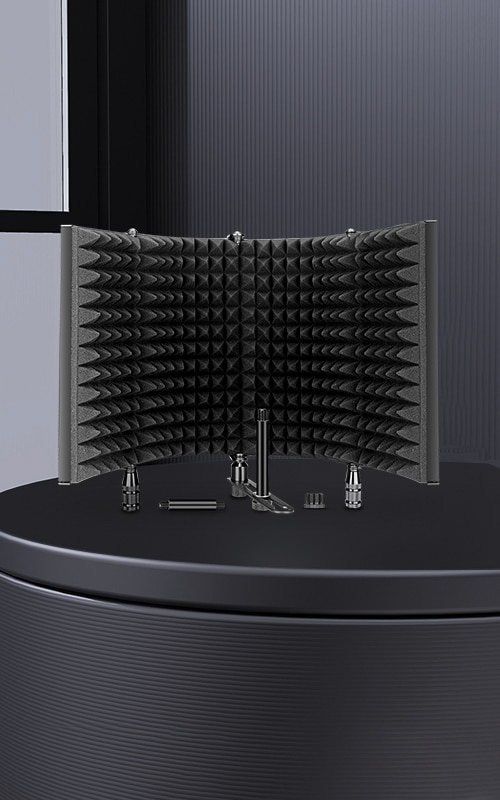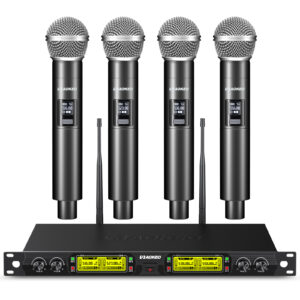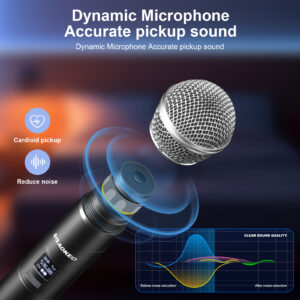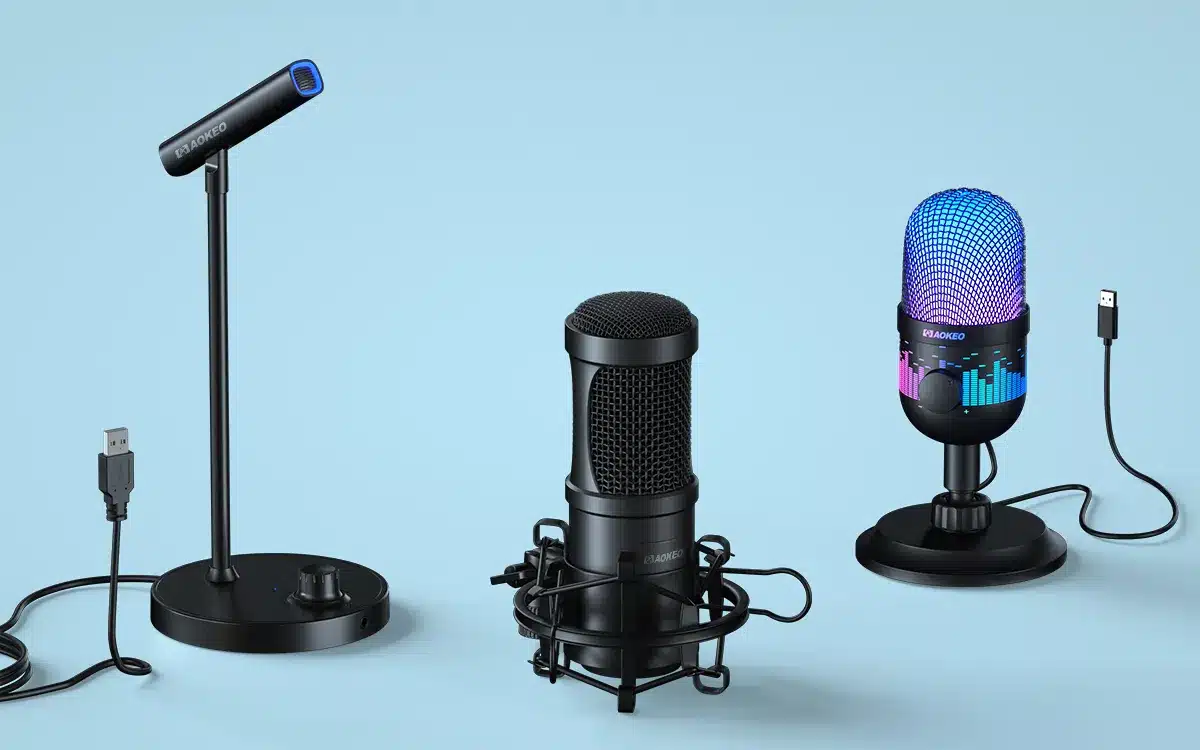Is a wireless microphone system worth buying
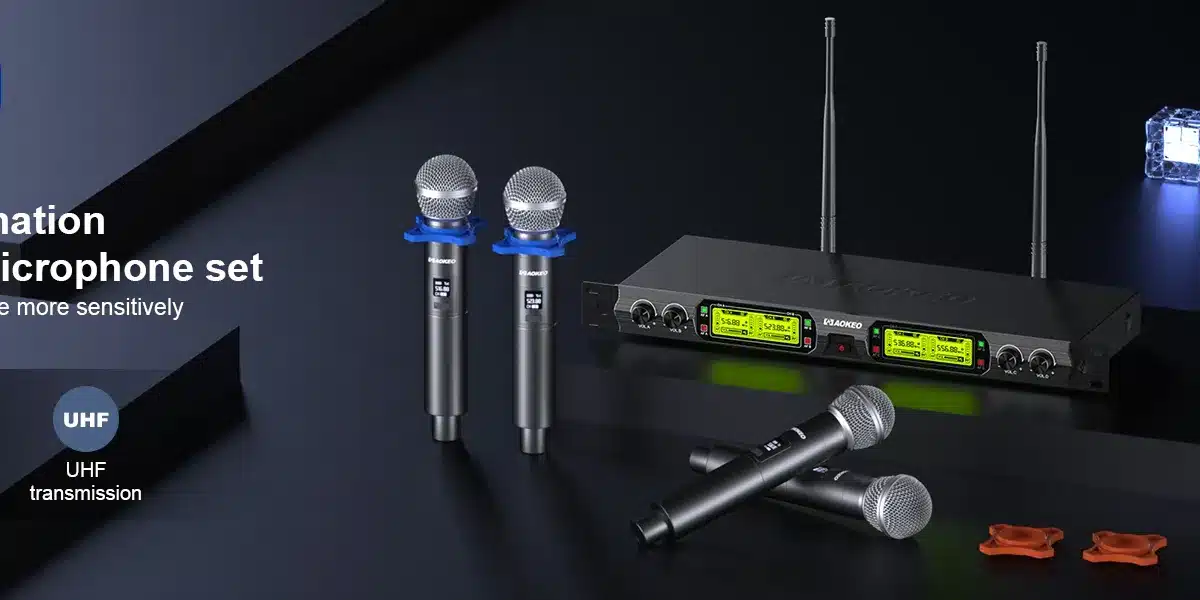
Microphones are important tools for recording and sending sound. People use them in many places, like singing on stage or talking on TV news. When picking a microphone, you have two choices: Wireless microphones and wired microphones. Each has its advantages and disadvantages, and is suitable for different scenarios and applications.
Many beginners may wonder whether a wireless microphone system is worth buying, or if it's better to purchase a wired microphone at the same price point. This article will answer these questions.
Table of Contents
What is a wireless microphone system
The wireless microphone system contains both the transmitter and receiver.
The core component of a wireless microphone system is the microphone at the transmitting end, which converts sound into electrical signals. It converts sound into electrical signals, and the transmitter converts the signals collected by the microphone into radio signals and sends them to the receiver. An antenna, usually a small metal rod or built-in component, is used to transmit the radio signals.
The receiver of the wireless microphone system receives the radio signal sent from the transmitter and converts it back into a sound signal. Audio output is used to connect sound signals to speakers, recording devices, or mixing consoles. Most wireless microphones require battery power, but there are also some that use external power or charging.
Features of wireless microphone system
Wireless microphones are not limited by cables and allow users to move freely, making them suitable for large-scale stage performances, speeches, and sports events. They can be quickly installed, set up, and adjusted without being limited by the length of the microphone cable, making it particularly suitable for deployment and use in multi-microphone systems.
Applications of wireless microphone system
If you need freedom of movement on occasions such as stage performances, speeches, sports events, and outdoor activities, choosing a wireless microphone can provide greater flexibility and convenience.
Wireless microphones are commonly used in music performances as they allow singers and musicians to move freely on stage and interact with the audience. The Aokeo V400 Wireless Microphone system has a usage range of 200 feet (approximately 60.2m), making it ideal for small to medium-sized music performances. It features four channels, making it suitable for hosts and allowing backup use for upcoming performers. Performers can move freely on stage and avoid wired microphones blocking their movement.
Journalists usually use wireless microphones to move freely during interviews while maintaining good audio quality.
Speakers, lectures, and churches often use wireless microphones because they allow them to move freely on stage. Aokeo's AK-V200 Wireless Microphone System product includes two microphones, suitable for use when one-on-one conversations are needed. With a range of 100 feet (approximately 30.5m), it is suitable for most small to medium-sized spaces.
For professional recordings or performances that require high sound quality, if wireless transmission is needed, a high-end wireless microphone system should be selected to ensure sound quality and signal stability. If the budget is sufficient, you can choose a high-quality wireless microphone system that is suitable for the scene requirements
By taking into account specific needs and usage environments, selecting the most suitable microphone type can ensure optimal performance and sound quality.
Aokeo V200
Aokeo V400
How does a wireless microphone system work
The wireless microphone system consists of two parts: transmission and reception. During this process, the transmitting part is powered by a battery, and the microphone converts the sound into an audio signal. After internal circuit processing, the radio waves of the audio information can be transmitted to the surrounding space.
The receiving part is usually powered by a power source. Firstly, the receiving antenna receives the radio waves emitted by the transmitting part. Then, the internal circuit processes them to extract the audio signal, which is transmitted to the amplification system through the output signal line to complete the wireless transmission of the audio signal.
How to setup a wireless microphone system
If you have just purchased a wireless microphone system and the product manual is difficult to understand, the following steps will help you quickly get started setting up the wireless microphone system.
- First step, regardless of which brand of wireless microphone system you are using, using a new battery can ensure stable usage. It is recommended to check the user manual of the wireless microphone system. If your battery has been used for more than half of the recommended lifespan in the product manual, replace the battery.
- Next, make sure the wireless microphone is turned off before turning on your receiver. If your receiver has an automatic frequency selection function, pressing the "Select" button on the receiver will automatically help you find the clearest and least interfering channel.
- Step three, to avoid sudden loud or harsh sounds, it is recommended to first lower the volume or audio level control of the microphone.
- Step four, turn on the microphone power. If the device supports synchronization, press the "Sync" button and it will automatically match the receiver's current frequency.
- Step five, check the receiver’s LED display to confirm signal reception from the microphone, and then adjust the volume of the microphone to the normal level.
- The sixth and important step is to sing or speak loudly into the microphone while gradually increasing the gain (some simple receivers use microphone volume). Observe the audio level indicator on the receiver. When your voice is at its maximum, it occasionally flashes or approaches the maximum value, indicating that the volume setting is appropriate. This ensures clear sound, without overload or distortion.
- The final step is to test the coverage range of the wireless microphone system. Walk around the performance venue and check if the signal from the receiver has weakened or been interrupted. If the signal in some corners is unstable, you can try adjusting the antenna direction again or changing the channel.
Some people are still unclear about how to set up and install a wireless microphone system how to connect wireless microphone to karaoke system, or how to connect a wireless microphone to a sound system.
Taking the Aokeo V400 Wireless Microphone system as an example, you can see all the sockets of the receiver in the following picture.
Firstly, power the wireless microphone system and connect the matching charger to the receiver and power supply.
Next, confirm that the audio or karaoke system has a 6.35mm input port, and connect the 6.35mm output port on the back of the receiver to the input interface of the audio equipment. (As shown in the figure, use a 6.35mm to 6.35mm audio cable)
If you need to connect to a professional audio or mixing console, use an XLR male to male audio cable to output from a separate channel of the receiver shown in the figure below to the audio device. (The figure indicates that XLR cables need to be purchased separately)
Then turn on the microphone receiver, power, and audio equipment, and perform a speech test.
Note that a loose cable connection may result in no sound or unwanted noise.
What is the best wireless microphone
In the field of compact and economical battery-powered wireless microphone systems, there are numerous products in different price ranges and functions to choose from in the market. Aokeo focuses on providing professional audio solutions for content creators and has currently launched multiple wireless microphone system products.
Faced with an increasingly complex wireless signal environment, Aokeo's wireless microphone system adopts optimized frequency band management and advanced anti-interference technology, effectively ensuring clear and stable transmission quality in complex scenarios such as conferences, stage performances, churches, outdoor activities, etc.
The Aokeo wireless microphone system, such as the V400 product series, adopts energy-saving circuit design and battery display design. It not only supports 8-hour-long battery life, but also uses high-quality chips with an automatic noise reduction function to achieve clear and full audio.
Compared to many wireless microphone systems on the market that cost thousands of dollars, Aokeo's handheld systems are more affordable while still delivering professional-grade sound quality. Even at the entry-level price, excellent sound quality performance can be achieved, far surpassing the stability and user experience of traditional low-priced microphones.
Whether you need wireless freedom indoors or outdoors, Aokeo can provide you with a suitable wireless microphone solution. Different series (such as V400 four-channel system or AK-V200 dual channel system) meet different usage needs, such as multi-device collaboration and multi-person presentations.
When choosing a wireless microphone system, mobility, audio quality, signal stability, and price are all key considerations. Aokeo remains committed to offering professional, user-friendly, and dependable audio solutions, empowering users to enjoy efficient and crystal-clear wireless sound transmission.
